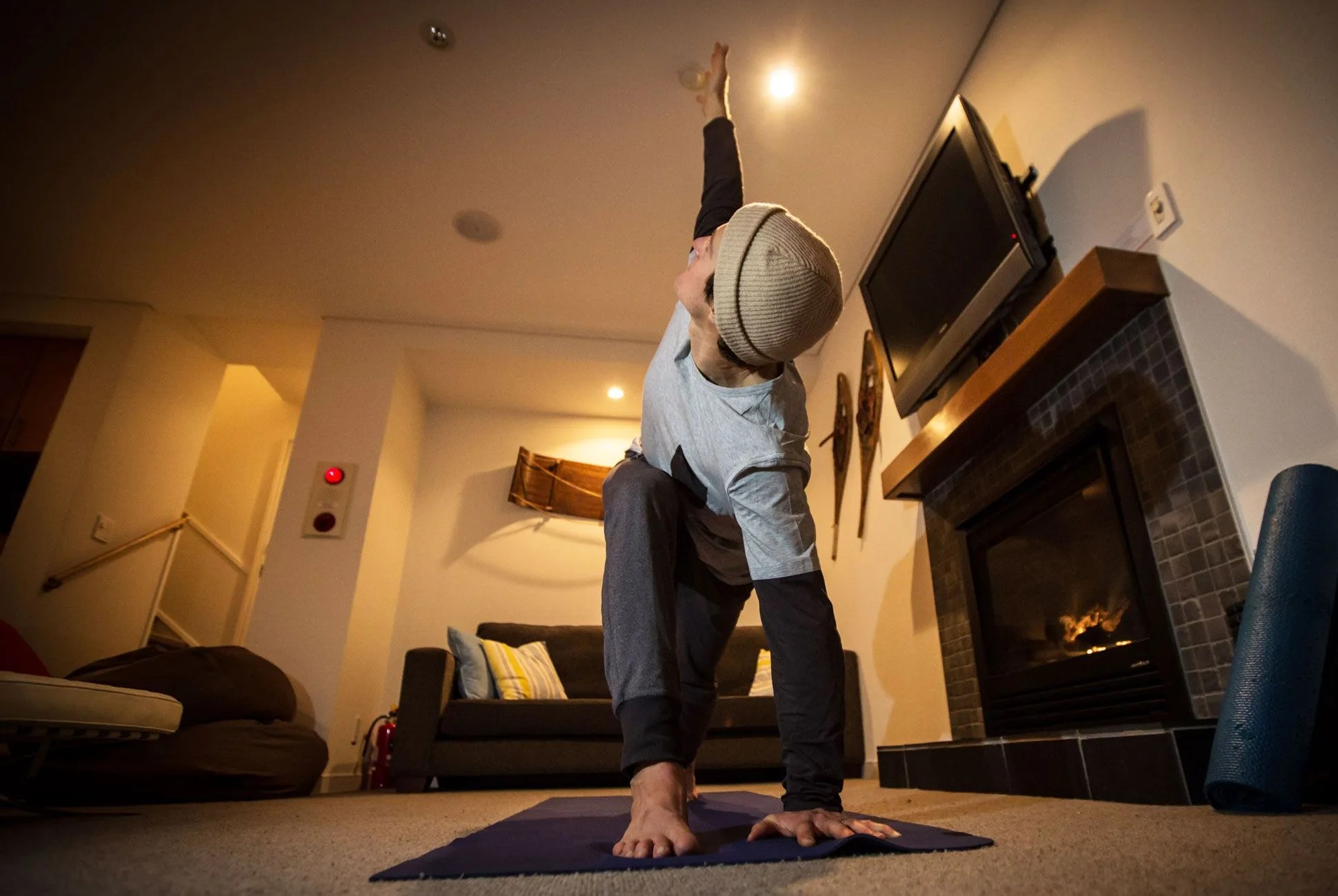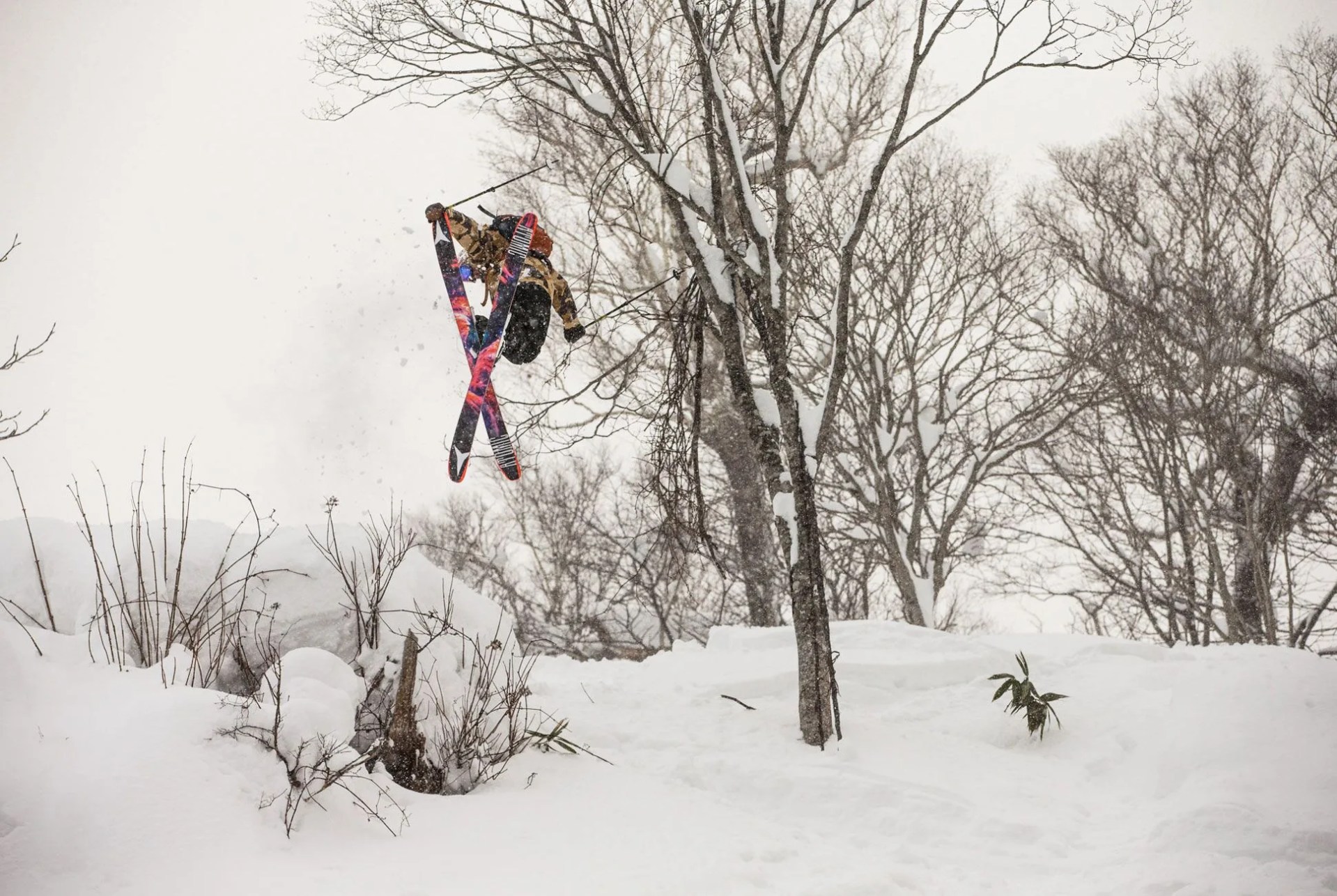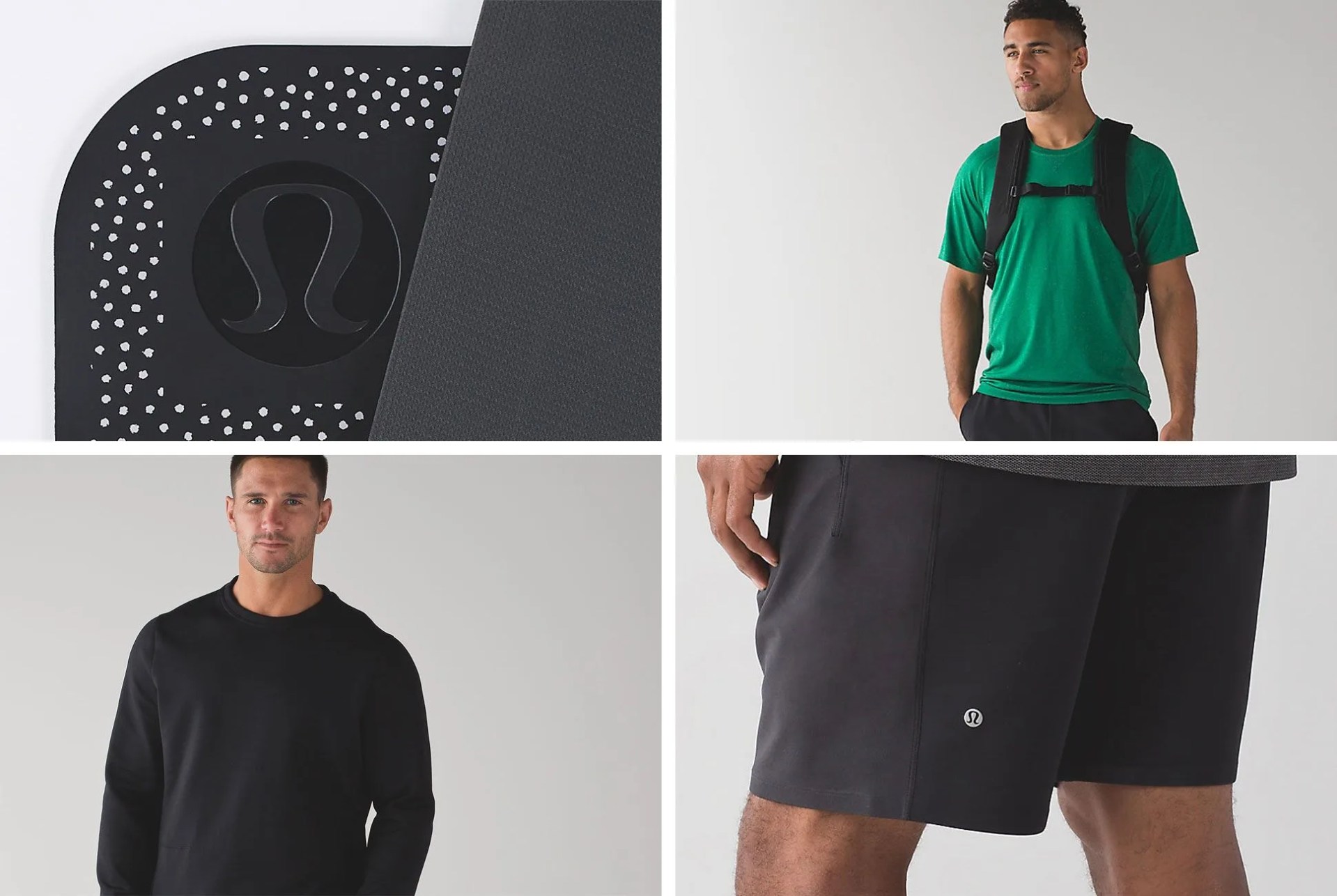Hurtling down a mountain on skis or a snowboard is fun. But whether you make it to the slopes only a few times a year or consistently earn a spot in the 100–day club, winter sports can be hard on the body. Take a spill on hard ice or cruise through a lengthy set of moguls and you’ll know.
While the resort hot tub is a great place to relax the muscles after the lifts close, a more active approach to recovery can counter the effects of the mountain and keep your body strong for the next time you go out.
“Yoga keeps my body feeling agile and flexible and really helps my mental game,” says professional skier Chris Benchetler. Benchetler is known for creating remarkable ski videos and is always on the move — searching for snow, rock climbing, mountain biking and surfing. He’s been practicing yoga for 10 years and has attended numerous retreats, including Lululemon’s Elite Ambassador Yoga Intensive led by Danielle Mika Nagel, the brand’s Mindfulness Manager. Benchetler may not be a yoga teacher, but practices it enough to know which poses relieve bodily stress induced by long days in the backcountry.
“My lack of routine doesn’t allow for a consistent practice, unfortunately,” he says. “Instead, I try to fit in a quick flow to clear my mind and stretch after most days of riding, even if just for ten minutes,” he says. Here are his five favorite yoga poses to complement a hard day on the hill.
1Forward Fold. “My hamstrings always seem to be the tightest part of my body after a day of skiing, and Forward Fold really allows me to check in to see where my legs are at on the soreness scale. This pose allows me to continually move deeper and deeper into my legs through the practice.”
1. Begin in with your hands on your hips. 2. Exhale as you bend forward at the hips, lengthening the front of your torso. 3. Hold on to each elbow with the opposite hand. Let the crown of your head hang down. Press your heels into the floor. Don’t lock your knees. 4. If you can, place your palms or fingertips on the floor beside your feet. Those with more flexibility can place their palms on the backs of their ankles. 5. Engage your upper thigh muscles by squeezing the knees. 6. Bring your weight to the balls of your feet. Keep your hips aligned over your ankles. Let the head hang.
2Plank. “Plank is the most valuable part of my practice. A strong core is the glue that holds everything together when I’m rag-dolling down a mountain or absorbing impact on jumps. Plank pose really feels like a great full core pose, as it doesn’t isolate particular ab muscles or miss any stabilizers.”


